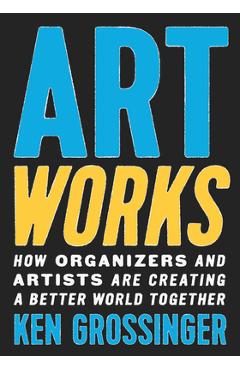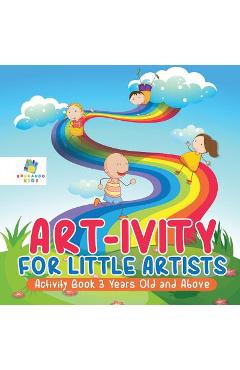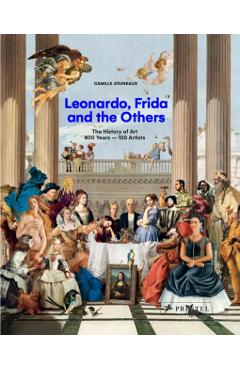Art, Artists and Gauguin, Paperback/Marleen Hengelaar-Rookmaaker

Detalii Art, Artists and Gauguin, Paperback/Marleen
elefant.ro
200 Lei
Foreign Books
Piquant Publishing
Art, Artists and Gauguin, Paperback/Marleen - Disponibil la elefant.ro
Pe YEO găsești Art, Artists and Gauguin, Paperback/Marleen de la Piquant Publishing, în categoria Foreign Books.
Indiferent de nevoile tale, Art, Artists and Gauguin, Paperback/Marleen Hengelaar-Rookmaaker din categoria Foreign Books îți poate aduce un echilibru perfect între calitate și preț, cu avantaje practice și moderne.
Preț: 200 Lei
Caracteristicile produsului Art, Artists and Gauguin, Paperback/Marleen
- Brand: Piquant Publishing
- Categoria: Foreign Books
- Magazin: elefant.ro
- Ultima actualizare: 02-11-2021 23:22:33
Comandă Art, Artists and Gauguin, Paperback/Marleen Online, Simplu și Rapid
Prin intermediul platformei YEO, poți comanda Art, Artists and Gauguin, Paperback/Marleen de la elefant.ro rapid și în siguranță. Bucură-te de o experiență de cumpărături online optimizată și descoperă cele mai bune oferte actualizate constant.
Descriere magazin:
Why is the publication of these writings so important? What does Rookmaaker\'s legacy have to offer us in the new millennium? First, his books and essays stand as a monument to the importance of rigorous Christian art-historical scholarship. For many years Professor of Art History at the Free University of Amsterdam, Rookmaaker was a fastidious scholar. Today, when a postmodern fascination with all things \'aesthetic\' and \'spiritual\' can easily engender scholarly carelessness and an ignorance of specific artworks, Roomaaker reminds us that Christian commitment must never be used to avoid the kind of precise, intellectual engagement which is so evident in his written words, a painstaking attentiveness to the details of particular pieces of art, and to the particularities of society and culture in which they are embedded. Second, we are reminded of the importance of breadth as well as depth. Rookmaaker\'s interests ranged far beyond the visual arts. He had a fascinated interest, for instance, in music (especially the spirituals and jazz), and in broader cultural concerns (youth culture, scientific discovery, and much more). In an age of increasing specialization and blinkered vision, Rookmaaker shows us that it is quite possible to be a specialist and to be alert to the links between these specialisms and much wider issues. Third, Rookmaaker sets the arts in the midst of a rich and full-blooded Christian world view. For him it was not good enough to claim that the arts are important for the Christian, and then justify this with a few verses carelessly plucked from Scripture. We need to demonstrate carefully what place the arts have in the grand and sweeping purposes of God for history, and it was to Rookmaaker\'s immense credit that for thousands he made this breathtakingly clear. In a climate when the contribution of a distinctively Christian perspective on the arts is so often ruthlessly marginalized, often to the point of extinction, Rookmaaker\'s voice is one we sorely need to hear. Fourth, nourished by the Dutch Neo-Calvinist philosophy of Dooyeweerd and his followers, Rookmaaker provides a vision of the arts that does justice both to their irreducible integrity and to their interrelatedness with other aspects of God\'s world. Western post modernity relishes in the \'aestheticization\' of culture, sometimes to the point that the aesthetic threatens to swallow up everything else in a wash of images. In his own day Rookmaaker saw that a proper refusal to isolate or downplay the arts must not be countered by a Neo-Romantic exaltation of the aesthetic. He knew there was another much more fruitful option, implicit in the Christian faith. We need to find it and celebrate it more than ever today. It is a wonderful thought that this man\'s rare wisdom, which so radically changed the lives of those who knew him, can now find its way to a wider audience in the pages that follow. Rookmaaker\'s is a timely wisdom, and it will inspire thousands for decades to come.

Produse asemănătoare

Blk Art: The Audacious Legacy of Black Artists and Models in Western Art - Zaria Ware
![]() libris.ro
libris.ro
Actualizat in 28/10/2025
195.25 Lei

Art Works: How Organizers and Artists Are Creating a Better World Together - Ken Grossinger
![]() libris.ro
libris.ro
Actualizat in 28/10/2025
132.53 Lei

Art-ivity for Little Artists Activity Book 3 Years Old and Above - Educando Kids
![]() libris.ro
libris.ro
Actualizat in 28/10/2025
83.65 Lei

Manga Artists\' Beginners Guide to Alcohol Markers: Learn to Layer, Mix and Blend Colors for Awesome Anime Art! - Karin
![]() libris.ro
libris.ro
Actualizat in 28/10/2025
105.97 Lei

Leonardo, Frida and the Others: The History of Art, 800 Years - 100 Artists - Camille Jouneaux
![]() libris.ro
libris.ro
Actualizat in 28/10/2025
168.3 Lei
Produse marca Piquant Publishing

Exploring Theological English Teacher\'s Guide: Reading, Vocabulary, and Grammar for Esl/Efl, Paperback/Cheri L. Pierson
![]() elefant.ro
elefant.ro
Actualizat in 12/02/2022
96.99 Lei

Pub Theology: Where potato wedges and a beer are a eucharistic experience, Paperback/Irene Alexander
![]() elefant.ro
elefant.ro
Actualizat in 02/11/2021
125 Lei

Art, Artists and Gauguin, Paperback/Marleen Hengelaar-Rookmaaker
![]() elefant.ro
elefant.ro
Actualizat in 02/11/2021
200 Lei

New Orleans Jazz, Mahalia Jackson and the Philosophy of Art, PB (vol2), Paperback/Marleen Hengelaar-Rookmaaker
![]() elefant.ro
elefant.ro
Actualizat in 02/11/2021
198 Lei

TIBET (book 4): Inside the Greatest Christian Revival in History, Paperback/Paul Hattaway
![]() elefant.ro
elefant.ro
Actualizat in 02/11/2021
113 Lei

Henan: Inside the Greatest Christian Revival in History, Paperback/Hattaway Paul
![]() elefant.ro
elefant.ro
Actualizat in 02/11/2021
100 Lei
